Slow architecture: John Pawson’s Casa delle Bottere complex in Veneto
Wallpaper* met with John Pawson during the construction of Casa delle Bottere in Veneto, northern Italy, in 2010. The house, that completed in 2014, was, for both designer and client, an exercise in slow architecture, recognising the time, thought and space required for the birthing of a masterpiece of minimalism.
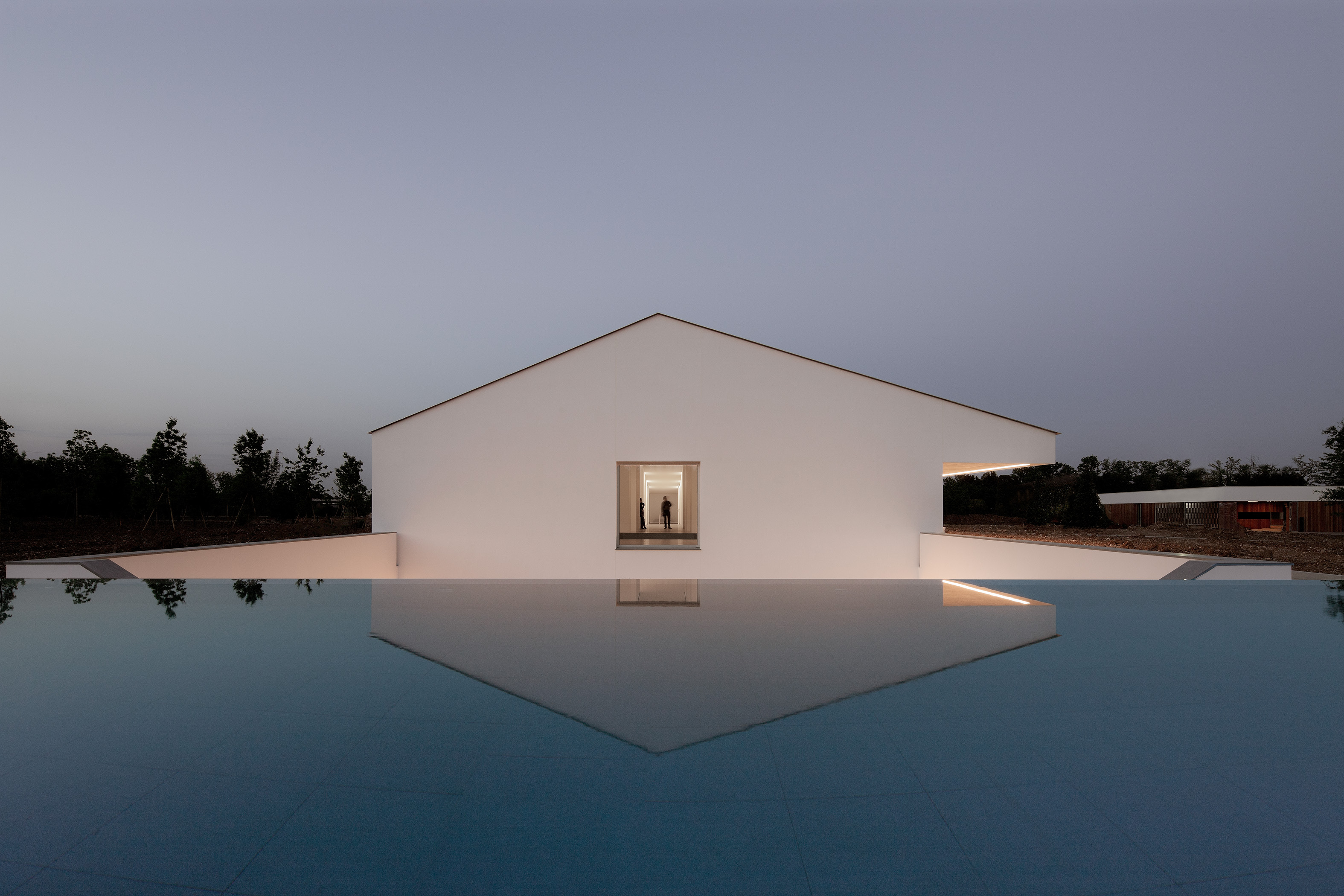
‘You’ve come to the right place for slowness,’ says John Pawson in the basement of his King’s Cross studio, from which comes the work that has given Pawson a global reputation as the pre-eminent supplier of architectural calm, be it for houses, hotels, offices, galleries, shops or even monasteries. Often characterised as minimalist, the Pawson aesthetic is actually one of considered reductivism, the removal of extraneous detail in favour of an all-enveloping simplicity. Sometimes this purity is juxtaposed with existing structure to accentuate its simplicity. Sometimes landscape is the foil.
The Casa delle Bottere combines the architect’s legendary asceticism with a full quota of cutting-edge low-energy technology. Pawson’s houses have always received more attention than his other works, largely because they seem to prescribe a very particular way of life. Yet as the architect himself gently points out, creating a domestic environment is always a collaboration with a client, an ongoing conversation that brings together their requirements with Pawson’s constantly refined visual sense.
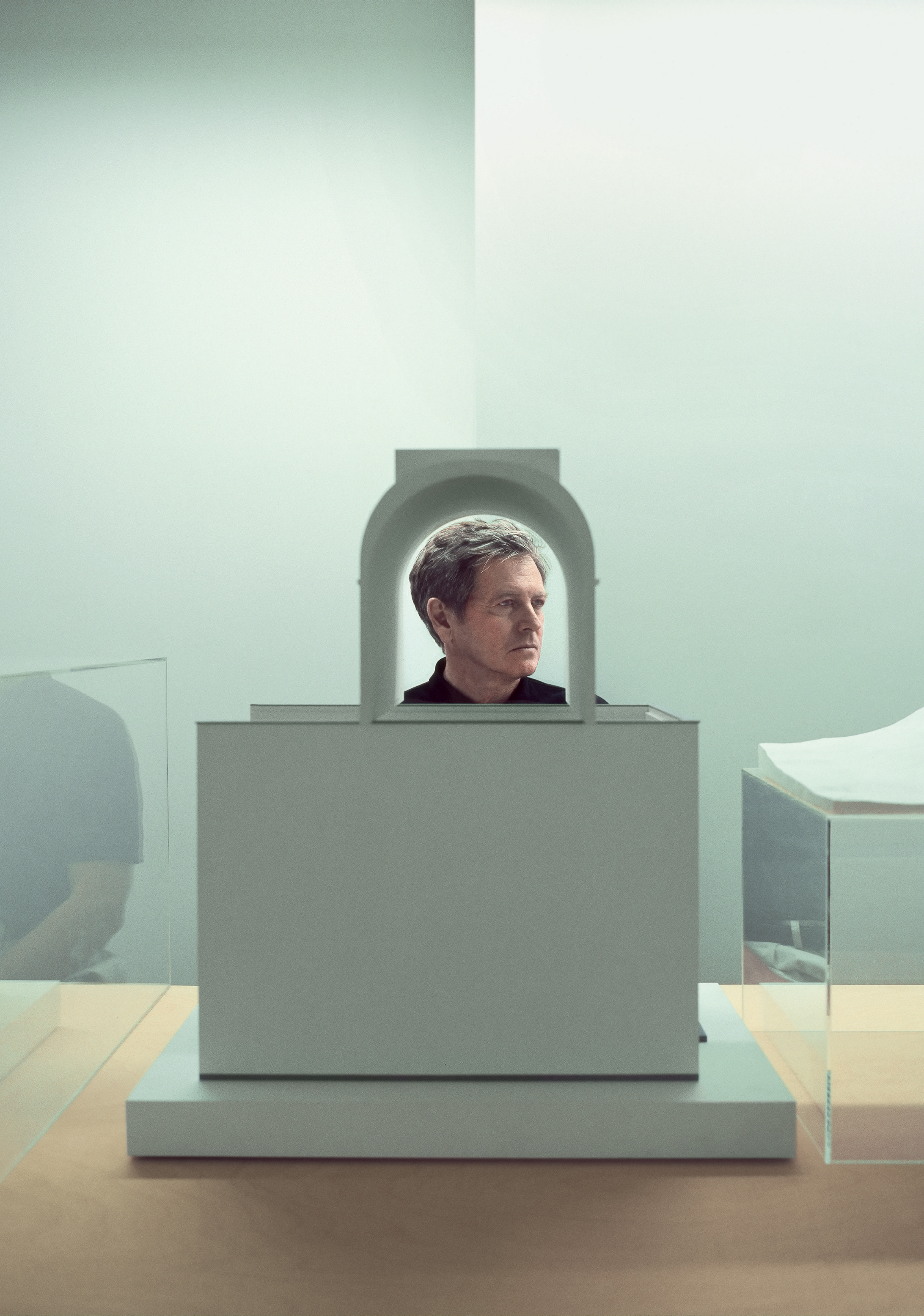
John Pawson in his London studio with a model of the private chapel that forms part of his latest project.
‘They’re trusting you with something they really can’t envision,’ says Pawson, adding, ‘I understand the client’s point of view more and more as I get older. They’re all hugely successful and talented people, and they have their own point of view. And they’re in the business of testing you. You’re doing them a disservice if you give in.’
This house and chapel in Veneto is a case in point. Casa delle Bottere is being built for a family with a sizeable experience of commissioning architecture, meaning that ‘the client had a very realistic programme for design and construction’. With that established, Pawson explains that the building is always ‘very dependent on the client – that’s the whole point of this game. It’s all to do with trust and courage and patience.’
Together with associate architect Giuseppe Cangialosi, of Treviso-based MZC Architettura, Pawson and his project architect Ben Collins have carved a remarkable dwelling out of the Venetian landscape, with the Dolomites rising in the distance. Inspired by both the rough simplicity of local agricultural buildings and the classical purity of Veneto’s most famous architectural son, Andrea Palladio, the Casa is a strangely satisfying hybrid of vernacular pragmatism and rigorous geometry.
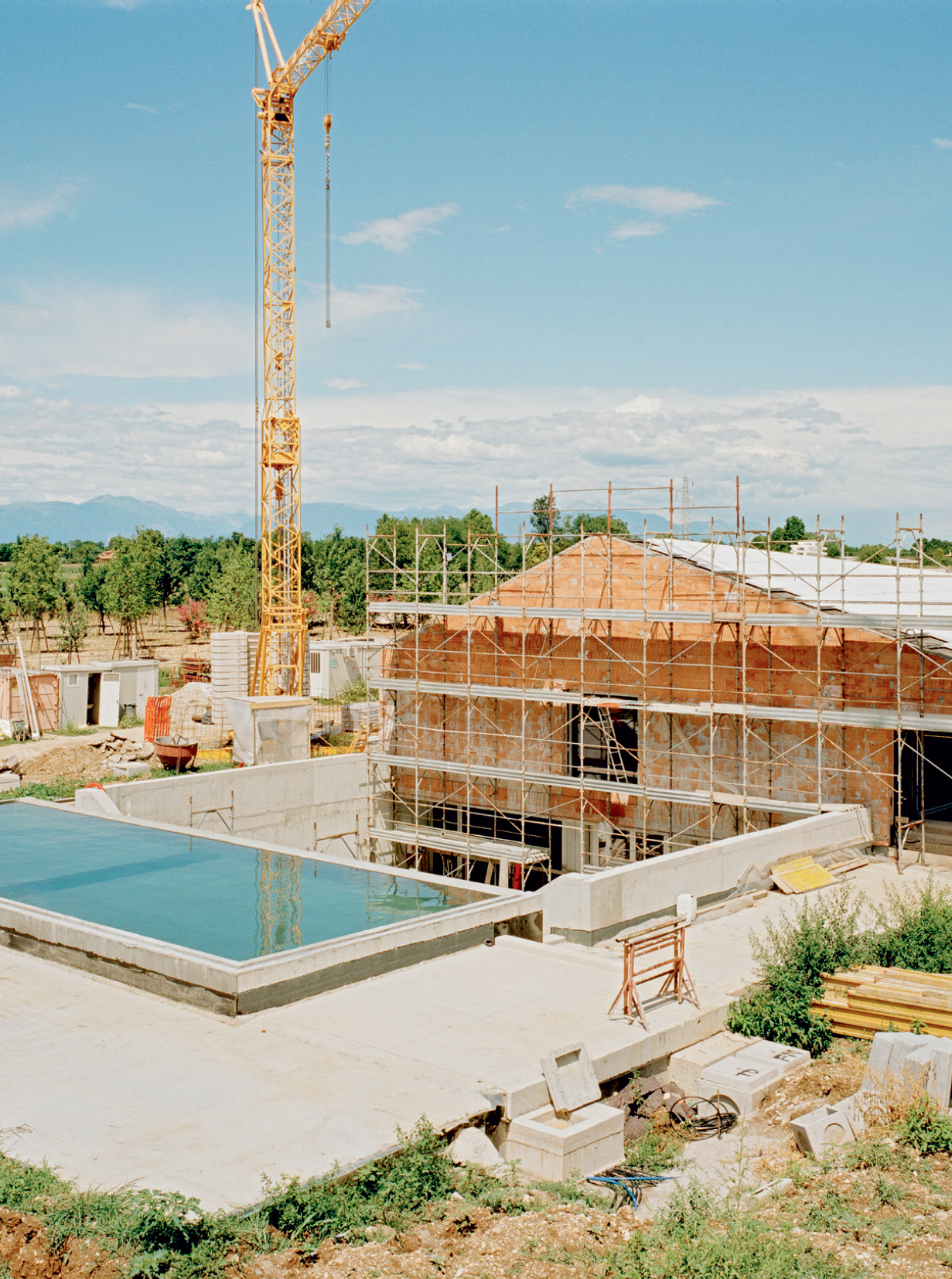
The pool, courtyard and gabled roof take shape.
Set within the landscape, the single storey dwelling is placed above a large basement and courtyard. ‘This house had to reach AECB CarbonLite gold standard sustainability status, so it’s incredibly energy efficient,’ says Pawson. ‘All the materials are recycled, it’s triple-glazed, there are photovoltaic panels – it’s a sort of case study.’ Energy efficiency is of course, now integral to every architectural brief, but Pawson stresses that this particular house takes things further – to achieve gold standard, it must put out just five per cent of current average CO2 emissions for a dwelling. ‘When you start saving the energy lost from hot water going down a waste pipe, you’re into quite sophisticated areas,’ Pawson says. ‘The triple glazing, for example, requires custom-built sliding doors.’
Externally, the house is finished with marmorino slabs, a traditional material in the Veneto region (it was used extensively by Palladio in the numerous grand villas he constructed in and around Vicenza). The 30m-long rectangular form of the new house is capped with an asymmetric roof, clad with custom-made white concrete slabs and supported by slender columns. ‘As a result, every room has a different shaped roof,’ says the architect.
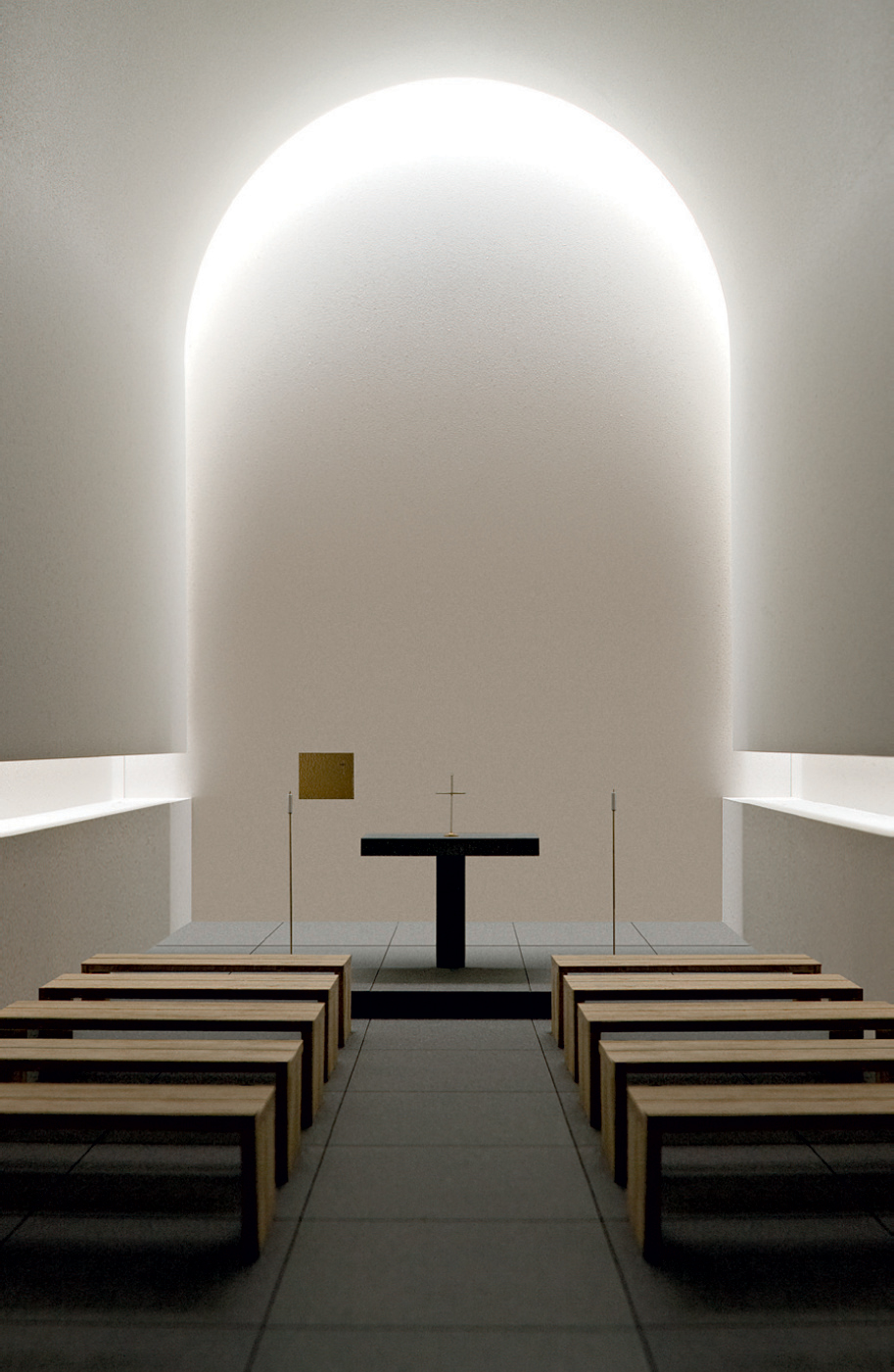
A model demonstrating how a concealed skylight in the chapel will allow natural light to filter in.
The main entrance is from below, where an excavated basement serves as car port and service area. There, the owners can park out of sight, then ascend to a double height entrance hall in the centre of the plot. To the west are the living areas, beneath the highest point of the roof, while bedrooms are off to the east. The deep eaves on the south façade provide shade from the sun and a terrace on which to eat and play – all rooms open up to the outdoors via those hefty glazed doors.
The roof also features an offset gable with a solitary window overlooking the entrance driveway and terminating the long axis that runs through the spine of the house. This cruciform plan references one of Palladio’s key architectural devices, running from the living area in the west to the master suite in the east, and north-south across the entrance hall at the house’s heart. The axis can be opened or closed off depending on requirements. All the bathrooms have rooflights and all public rooms have a dual aspect, while artificial lighting is discreetly concealed.
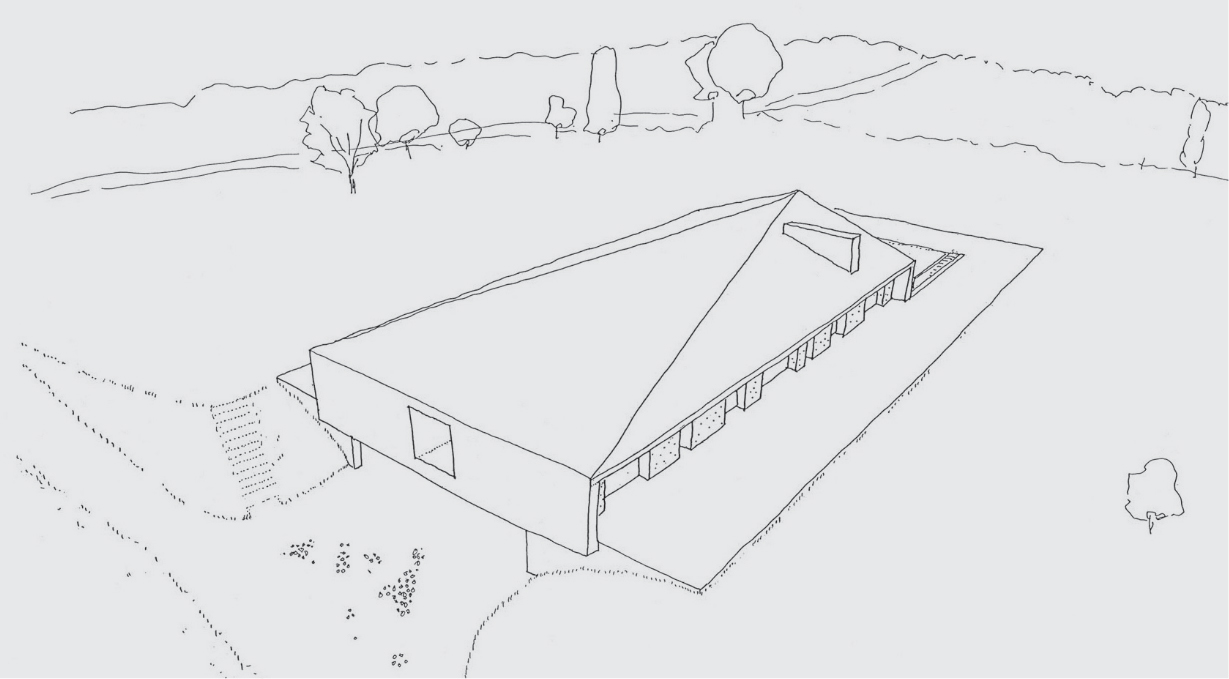
A sketch showing the main entrance
The landscaping has been designed by Pawson’s long-term collaborator Jonnie Bell, who has planted rows of oak trees that run with the contours to provide screening and shade. The chapel is designed as an object within this landscape, set apart from the main house and intended for family baptisms and private services. An unheated box with a barrel-vaulted ceiling, above which a concealed skylight allows natural light to filter down from behind the walls, it is deceptively simple, with Toscana Pietra limestone flooring and an altar and benches made from local oak.
‘It’s nice for us to do these spaces,’ says Pawson. ‘Churches have been a learning curve – Cistercians, for example, are the ultimate minimalists.’ The practice’s work on the Our Lady of Novy Dvur monastery in the Czech Republic, completed in 2004, won it widespread acclaim and more religious buildings are in the offering.
An adaptation of a story originally featured in the October 2010 issue of Wallpaper* (W*139)
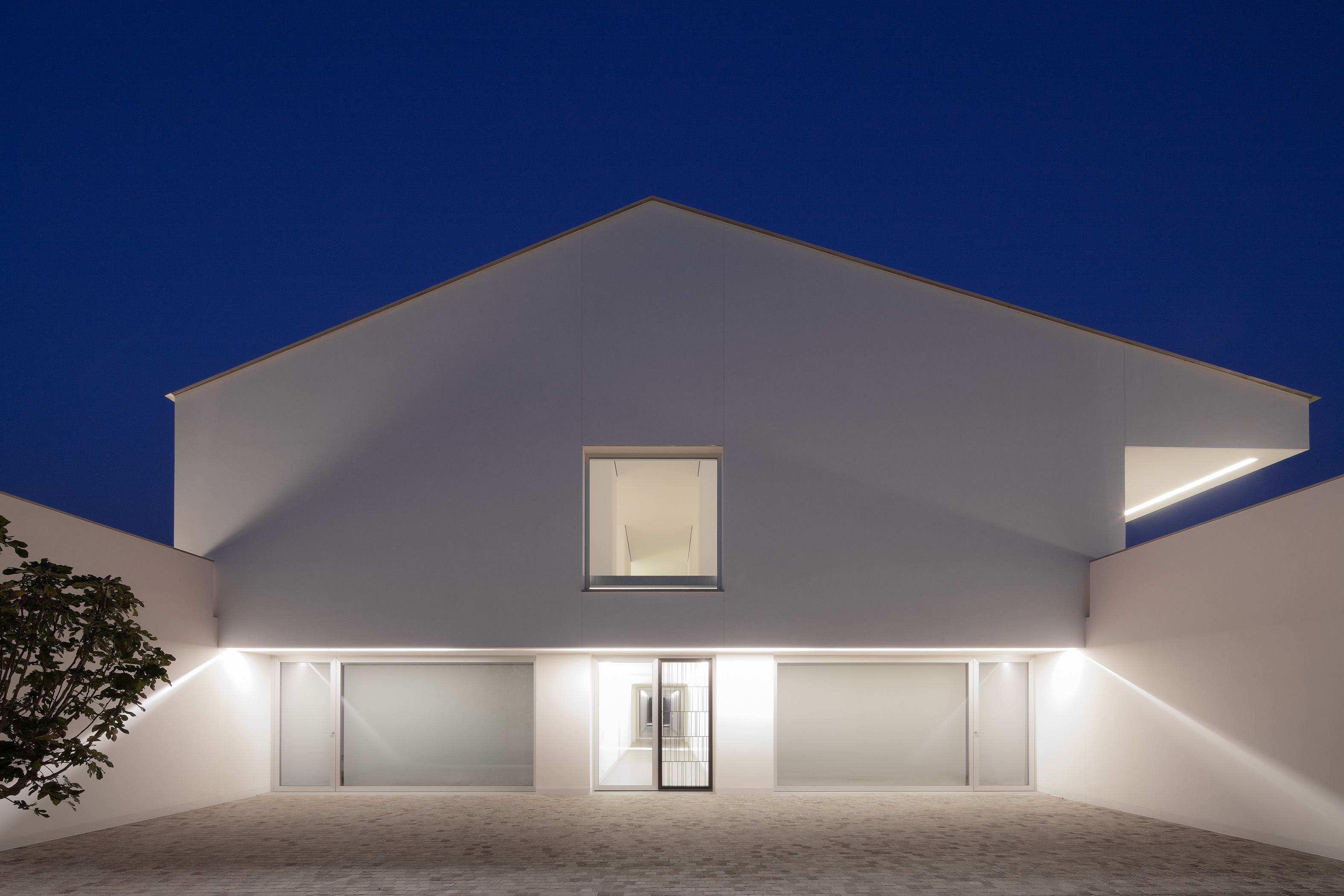
Western façade with sunken courtyard.
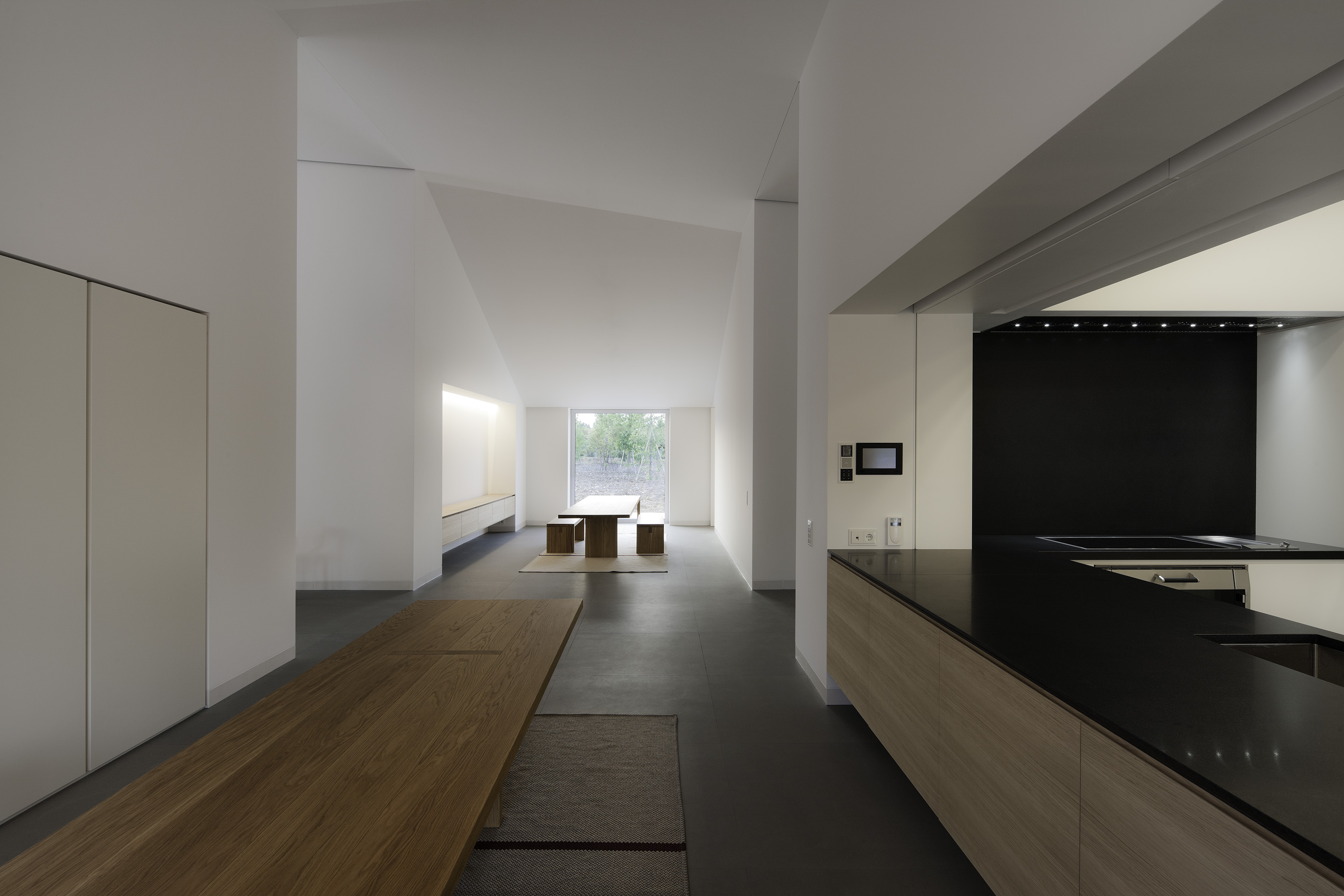
Interiors at Casa delle Bottere.
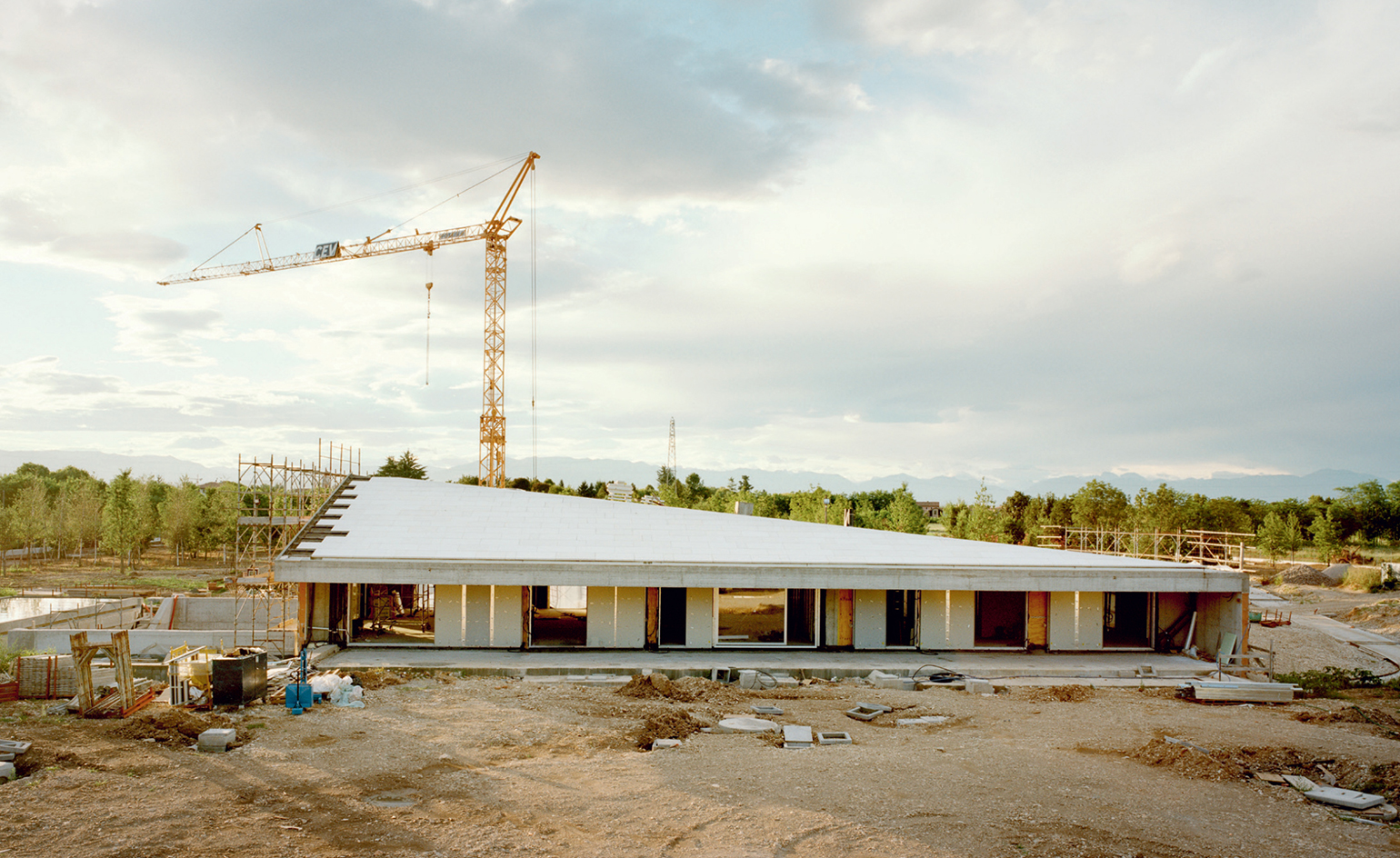
The house under construction, showing the south façade.
INFORMATION
For more information, visit John Pawson’s website and the MZC Architettura website
Receive our daily digest of inspiration, escapism and design stories from around the world direct to your inbox.
Jonathan Bell has written for Wallpaper* magazine since 1999, covering everything from architecture and transport design to books, tech and graphic design. He is now the magazine’s Transport and Technology Editor. Jonathan has written and edited 15 books, including Concept Car Design, 21st Century House, and The New Modern House. He is also the host of Wallpaper’s first podcast.
-
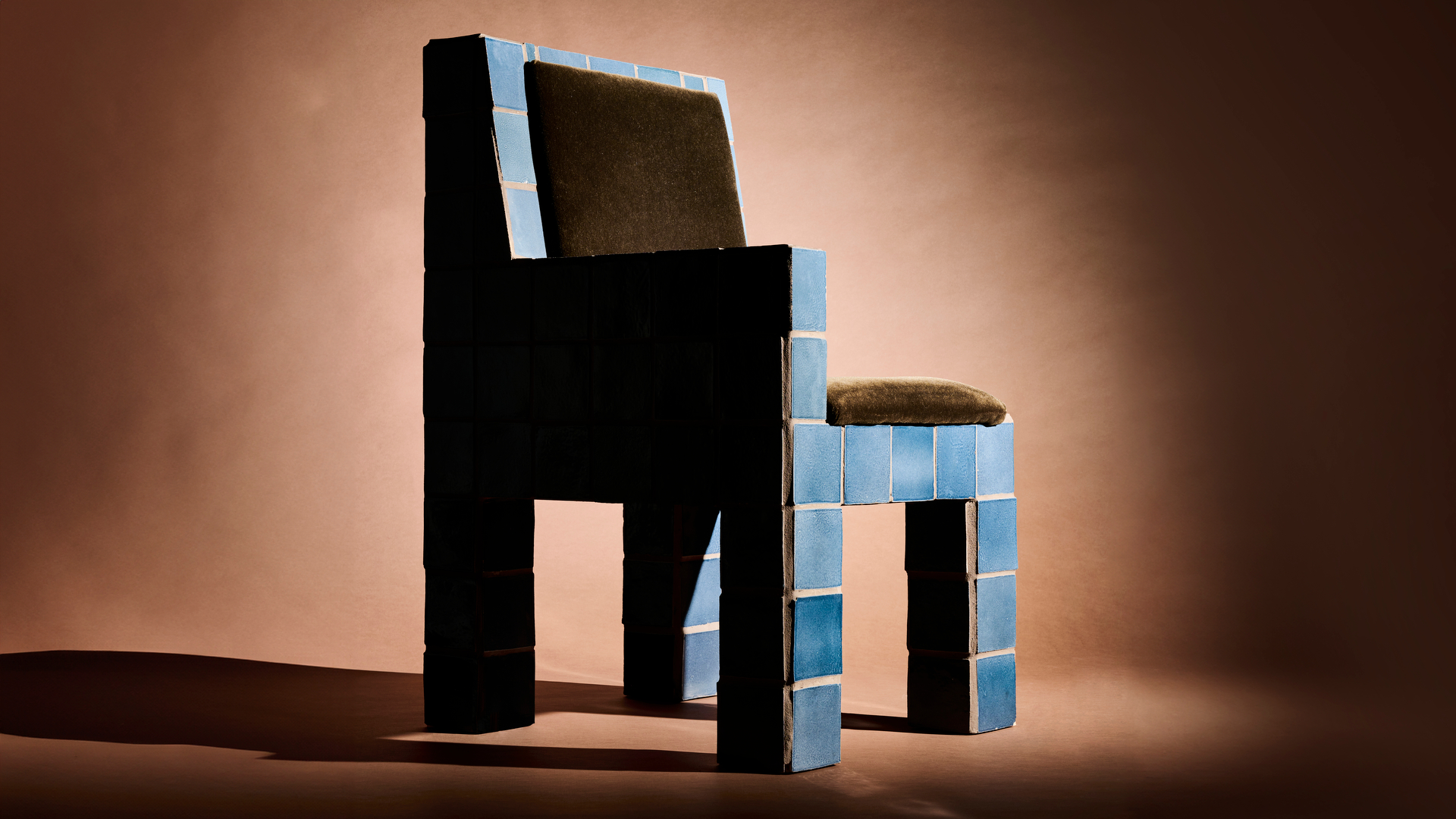 This LA-based furniture designer finds a rhythm in music and making
This LA-based furniture designer finds a rhythm in music and makingWallpaper* Future Icons: LA-based Ah Um Design Studio's expressive furniture features zig-zagging wooden frames, mohair and boucle upholstery, and a distinctive use of tiles
-
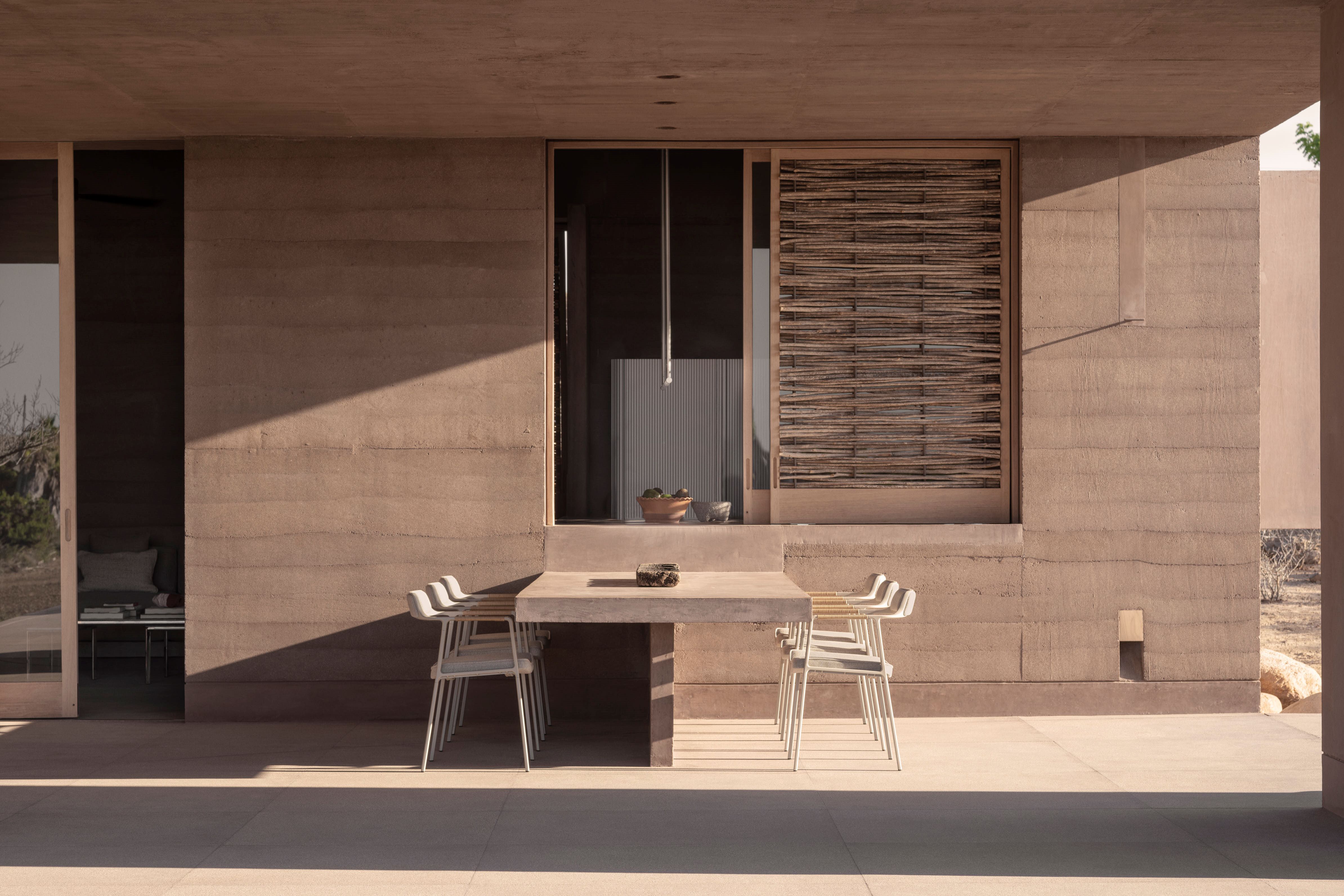 This Mexican architecture studio has a surprising creative process
This Mexican architecture studio has a surprising creative processThe architects at young practice Pérez Palacios Arquitectos Asociados (PPAA) often begin each design by writing out their intentions, ideas and the emotions they want the architecture to evoke
-
 The Bombardier Global 8000 flies faster and higher to make the most of your time in the air
The Bombardier Global 8000 flies faster and higher to make the most of your time in the airA wellness machine with wings: Bombardier’s new Global 8000 isn’t quite a spa in the sky, but the Canadian manufacturer reckons its flagship business jet will give your health a boost
-
 Arbour House is a north London home that lies low but punches high
Arbour House is a north London home that lies low but punches highArbour House by Andrei Saltykov is a low-lying Crouch End home with a striking roof structure that sets it apart
-
 A former agricultural building is transformed into a minimal rural home by Bindloss Dawes
A former agricultural building is transformed into a minimal rural home by Bindloss DawesZero-carbon design meets adaptive re-use in the Tractor Shed, a stripped-back house in a country village by Somerset architects Bindloss Dawes
-
 RIBA House of the Year 2025 is a ‘rare mixture of sensitivity and boldness’
RIBA House of the Year 2025 is a ‘rare mixture of sensitivity and boldness’Topping the list of seven shortlisted homes, Izat Arundell’s Hebridean self-build – named Caochan na Creige – is announced as the RIBA House of the Year 2025
-
 In addition to brutalist buildings, Alison Smithson designed some of the most creative Christmas cards we've seen
In addition to brutalist buildings, Alison Smithson designed some of the most creative Christmas cards we've seenThe architect’s collection of season’s greetings is on show at the Roca London Gallery, just in time for the holidays
-
 In South Wales, a remote coastal farmhouse flaunts its modern revamp, primed for hosting
In South Wales, a remote coastal farmhouse flaunts its modern revamp, primed for hostingA farmhouse perched on the Gower Peninsula, Delfyd Farm reveals its ground-floor refresh by architecture studio Rural Office, which created a cosy home with breathtaking views
-
 A revived public space in Aberdeen is named Scotland’s building of the year
A revived public space in Aberdeen is named Scotland’s building of the yearAberdeen's Union Terrace Gardens by Stallan-Brand Architecture + Design and LDA Design wins the 2025 Andrew Doolan Best Building in Scotland Award
-
 A refreshed 1950s apartment in East London allows for moments of discovery
A refreshed 1950s apartment in East London allows for moments of discoveryWith this 1950s apartment redesign, London-based architects Studio Naama wanted to create a residence which reflects the fun and individual nature of the clients
-
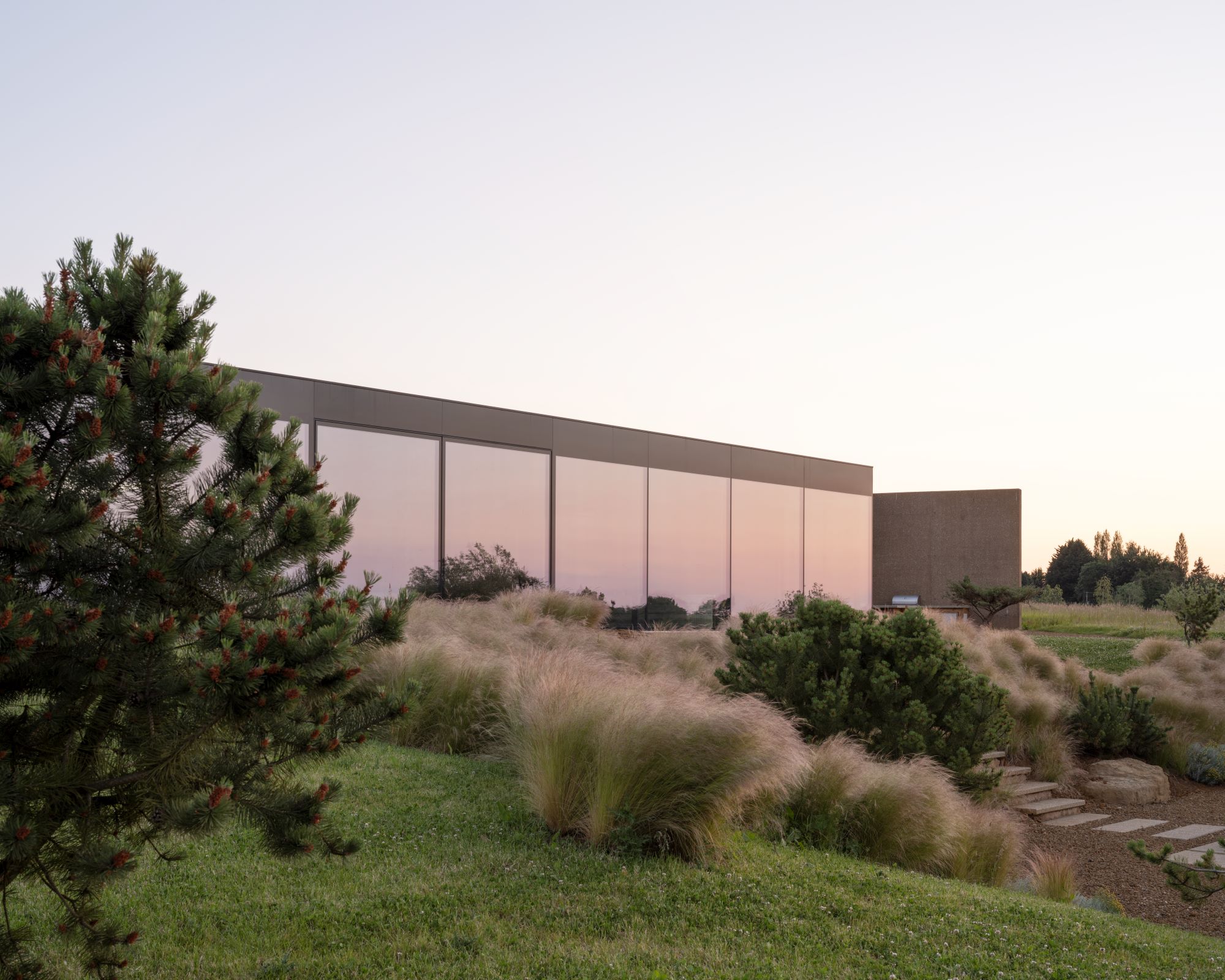 In this Cotswolds home, drama meets minimalism
In this Cotswolds home, drama meets minimalismCotswolds home Hiaven house, with interiors designed by McLaren Excell, is a perfect blend of contemporary chic and calm, countryside drama